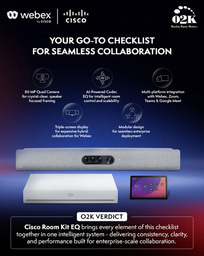Essentials for Online Classes and Meetings in 2024

With the AV industry constantly adapting, new features for online classes and remote work can make the virtual world a live experience. This use of technology, along with the advancements in technological products, allows people to have immersive experiences no matter where they are located.
“Combining technical elements (audio, video, lighting, staging, etc.), to create a media product” turns a concept into a production, Stanford stated in an article on A/V Requirements for Digital and Hybrid Events. People can always brand themselves or their company while videoconferencing today to maintain a certain status of their online identity.
Following technology’s best practices is key to better engaging students and other audiences online.
Here are five essentials for improving online classes and meetings that will lead to better outcomes:
- Multimedia Presentations communicate messages by using multiple elements such as videos, polls, and discussion-based tools. This type of presentation reaches more than the average learner, as having various media channels in the mix increases memory retention. Students are more engaged when multiple senses are used to catch their attention. Audio visual aids trigger both senses and are the most common in online settings.
- Interactive Modules encourage people to work through online content by practicing it. While reading works for some, others may benefit from different methods for a better understanding. E-learning platforms provide structure and guidance that can enable someone to feel more confident in reaching their learning goals. Interaction on the web comes in many different forms and does not just include people conversing with one another. Guided simulations allow people to analyze concepts more in-depth, which promotes critical thinking.
- Accessibility gives people a reason to continue using a program or choose to participate. It is essential as more people are willing to act when it’s convenient. The easier it is to set up a platform and utilize it, the higher the probability it will have positive outcomes. For example, Zoom and Microsoft Teams are widely used across the global population because they are simple to navigate yet advanced in their tools. In addition, closed captioning can help people stay more attentive and is useful in maintaining diversity, equity, and inclusion (DEI) efforts.
- Privacy protects all parties in the virtual world by limiting the spread of sensitive information. Using public Wi-Fi networks without a VPN increases the risk of breaking confidentiality. It is suggested that people have a secure space to work in with limited background activity, such as a home office.
- Up-to-Date Technology places people in a position to uphold professionalism and make online interactions more personal. A webcam with good visual clarity and either a microphone or headset for sufficient sound quality is suggested. Visual appeal and audio quality either capture or turn off someone’s attention. Using an ethernet cable helps avoid the disruption of network connection by linking a device, such as a personal computer, directly to an internet provider. Newer tools provide further security so people can have the best setup possible.
What online learning or meeting essentials do you use, and which ones work well for your virtual connectedness? Leave your answer in the comments so Xchange community members can stay up to date with the latest.






Please sign in or register for FREE
If you are a registered user on AVIXA Xchange, please sign in
Thank you for sharing this